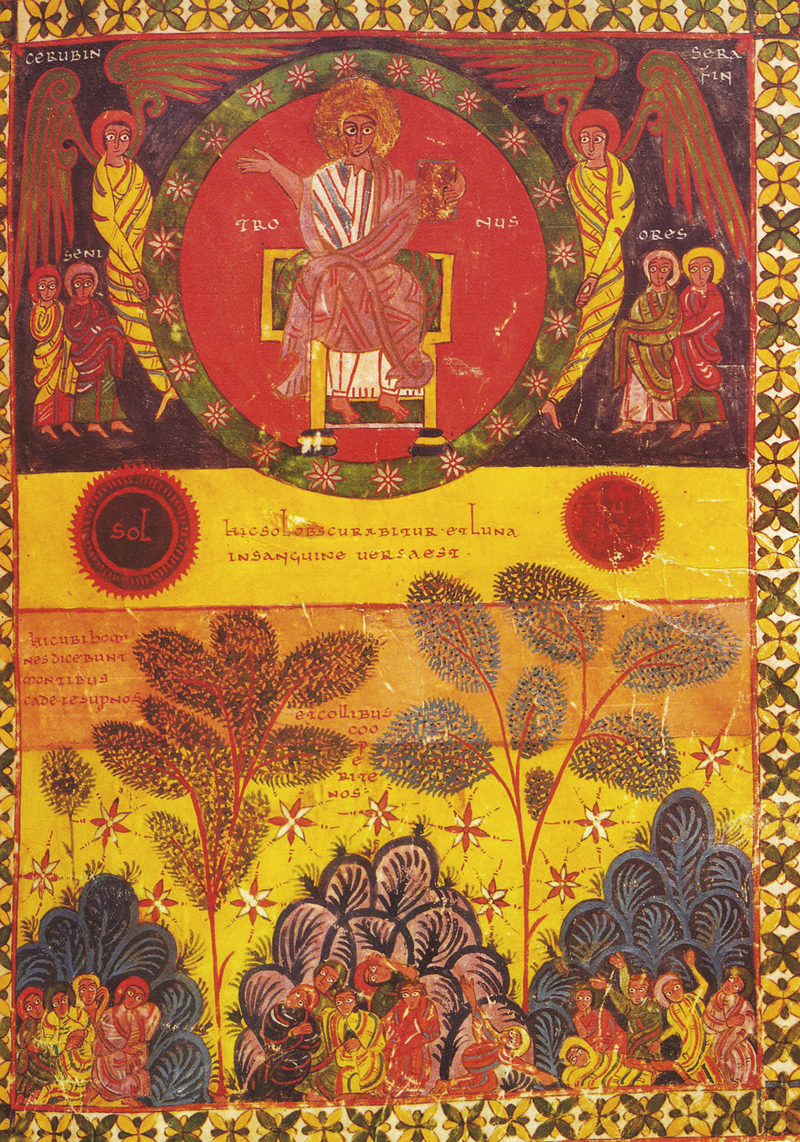
Pierpont Morgan Library / Wikimedia CommonsEclipses recorded in Comentário sobre o ApocalipsePierpont Morgan Library / Wikimedia Commons
“[…] and the Sun was obscured and the Moon turned to blood.” While the blood-red eclipsed Moon was seen as a possible sign of the apocalypse, descriptions like the above from Comentário sobre o Apocalipse (Commentary on the Apocalypse), a book written by Spanish theologian Beatus of Liébana (730–785) in 1090, portrayed eclipses of the Sun and changes in the color of the sky. Texts and paintings by medieval monks have thus helped to accurately date major volcanic eruptions. During a solar eclipse, the Moon appears like a reddish sphere as it is bathed in sunlight bent around the Earth by its atmosphere. It can also disappear, covered by the dust released by volcanic eruptions, limiting the amount of sunlight that reaches the Earth’s surface, with a negative impact on crops. “The darkest lunar eclipses all occurred within a year or so of major volcanic eruptions,” Sébastien Guillet of the University of Geneva told the University of Cambridge’s newsletter. He led a group that spent five years examining hundreds of twelfth- and thirteenth-century chronicles and paintings from Europe and the Middle East. Of the 64 total lunar eclipses that occurred in Europe between 1100 and 1300 — one of the periods of greatest volcanic activity in Earth’s history — 51 were faithfully documented. Eruptions in the medieval period may have been the cause of the Little Ice Age, when glaciers expanded into Europe (Cambridge News and Nature, April 5).
Republish